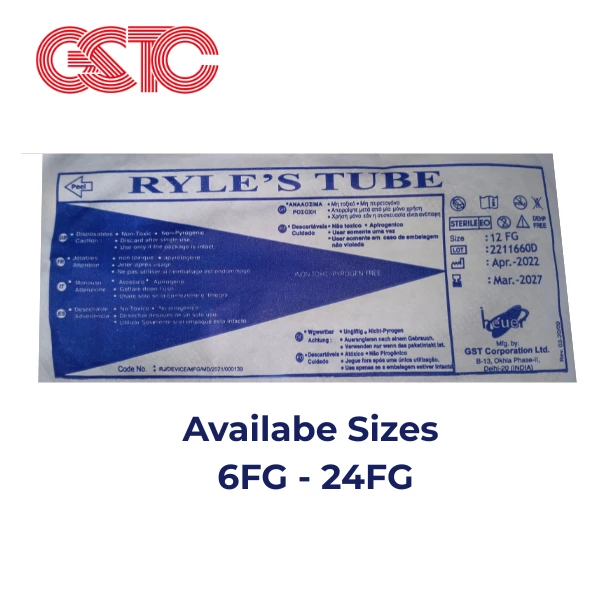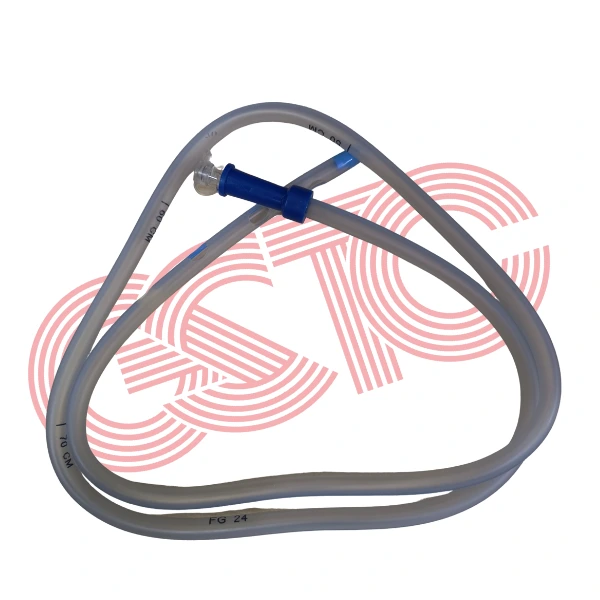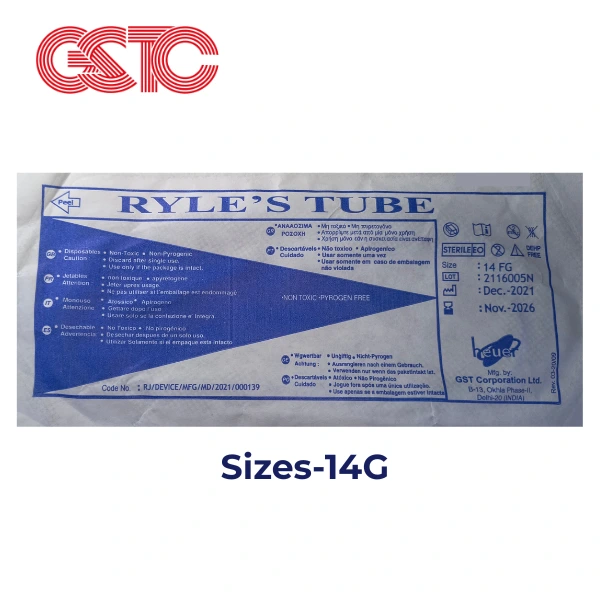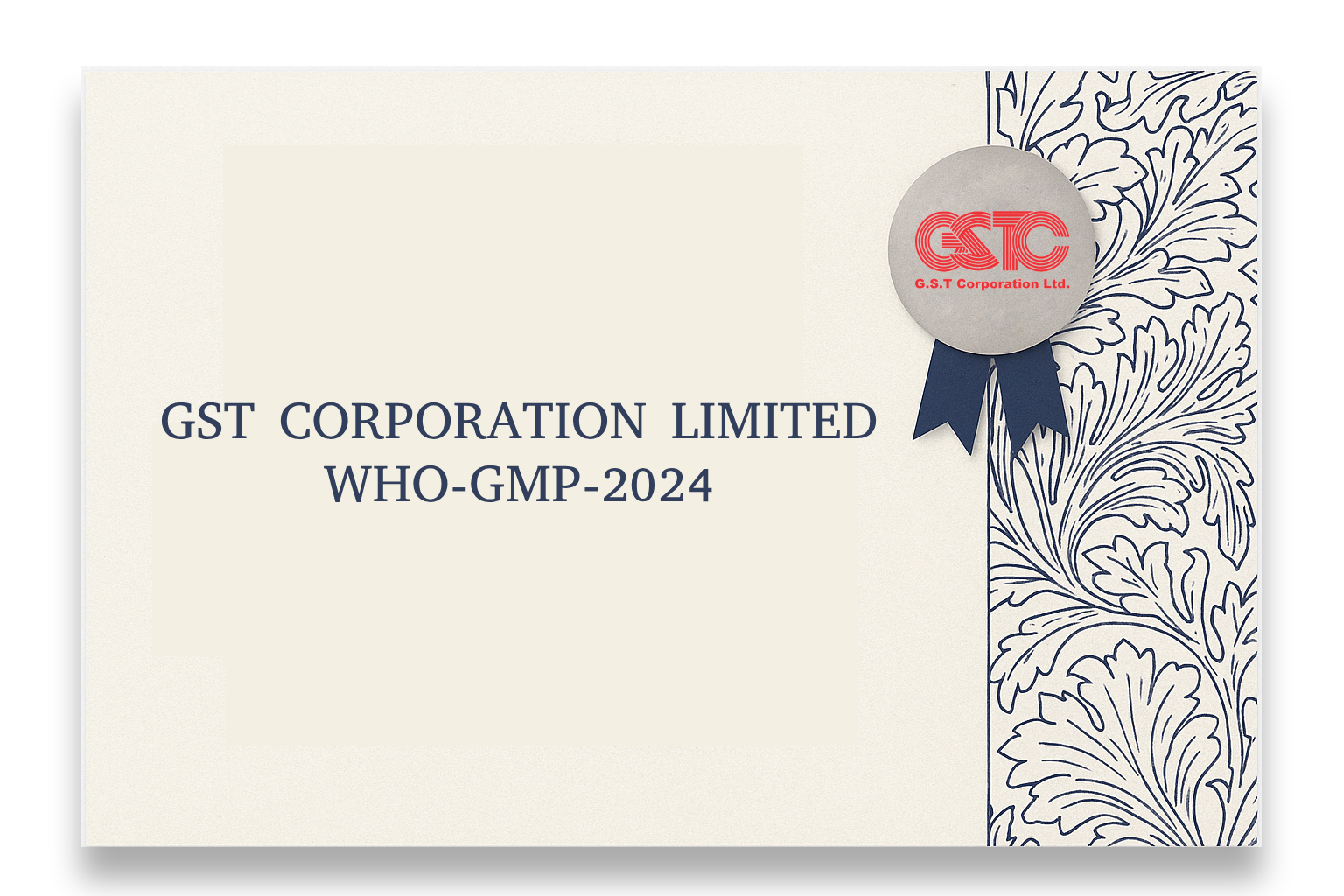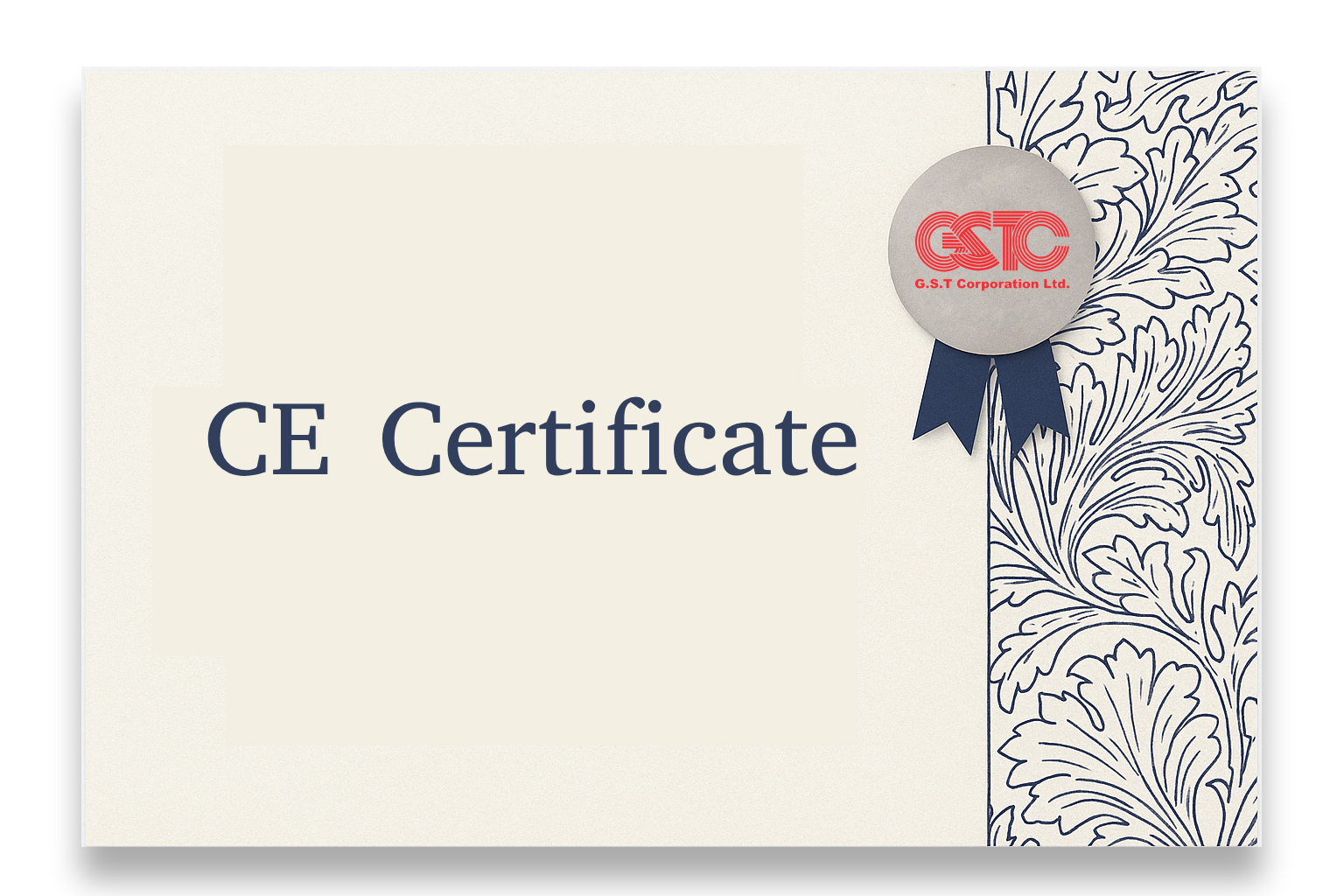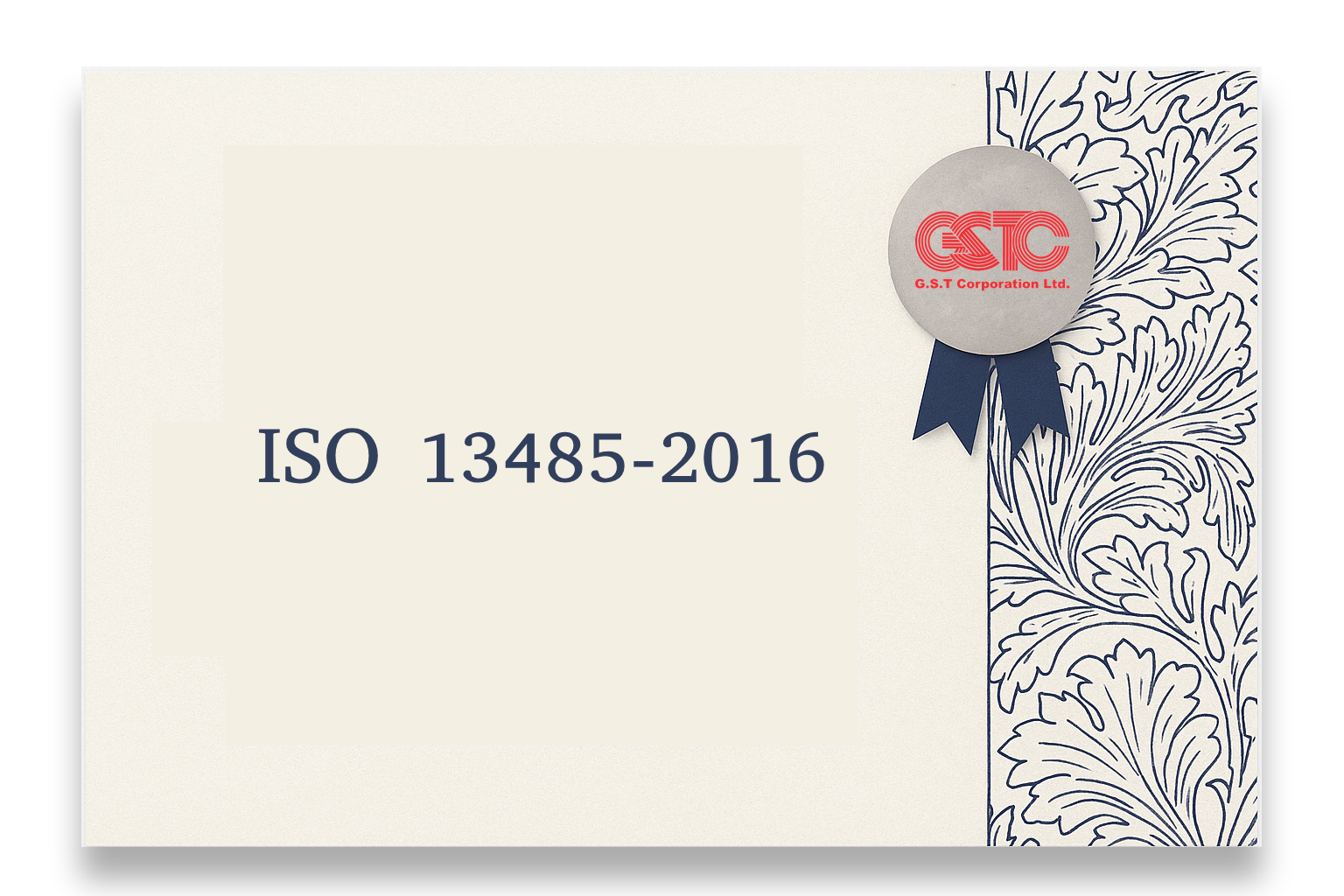Description
Key Features of GSTC NG Tube:
- Reduce Tissue Damage: The tube’s low-friction surface reduces the risk of tissue injury during insertion or removal.
- Silicone Elastomer Coating: silicone coating protects the tube and prevents possible side effects of PVC, thus making the patient safer.
- Coned Distal End with Steel Ball: Facilitates easy and accurate insertion with less discomfort.
- Efficient Drainage: Four lateral eyes (side openings) facilitate effective drainage of gastric content, enhancing overall tube performance.
- Increase Placement Accuracy: Markings at 50, 60, and 70 cm, along with a radio-opaque line, enable precise positioning.
The GSTC Ryles Tube is available in 10 sizes: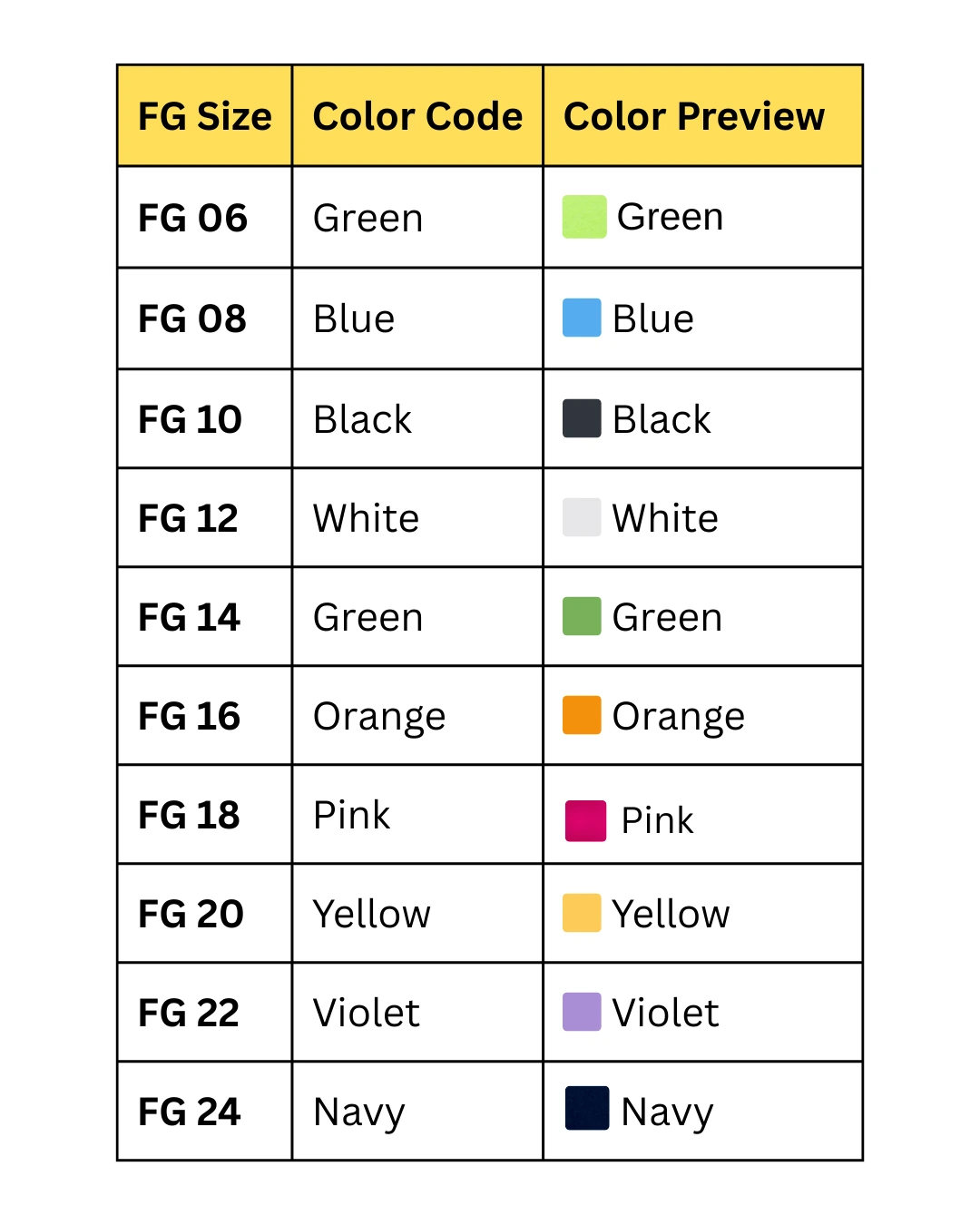
Applications of Nasogastric Tube
- Enteral Feeding: Nutritional support for patients unable to eat
- Medication Delivery: Safe administration of liquid drugs
- Gastric Decompression: Removal of stomach contents in obstruction or post-surgery cases
- Irrigation and Lavage: Used in cases of poisoning or toxin ingestion
Each GSTC NG tube is designed to reduce complications during nasogastric tube insertion and support effective patient care.
Why Choose Us?
- India’s Trusted Leader: GSTC is India’s leading manufacturer and exporter of Medical Disposables, with over 60 years of experience, serving clients in 30+ countries.
- Unmatched Quality: Our Nasogastric tube (NG Tube) is crafted using flexible, kink-resistant tubing & smooth insertion tips to prioritize patient safety.
- Reliable Delivery: We are a leading Ryles tube Manufacturer, ensuring your orders are delivered on time.
